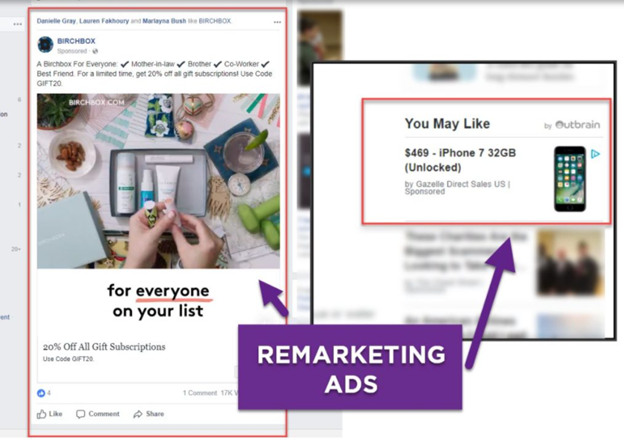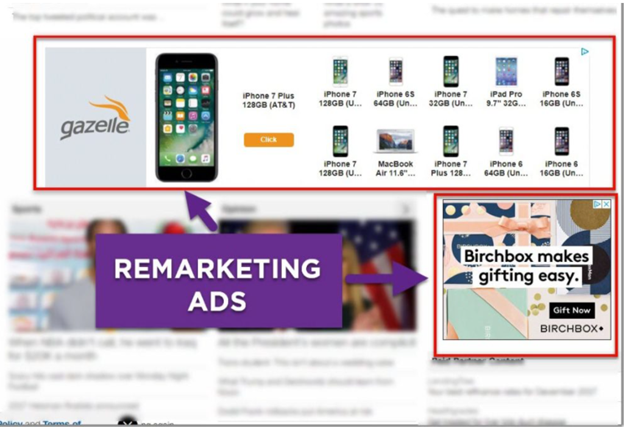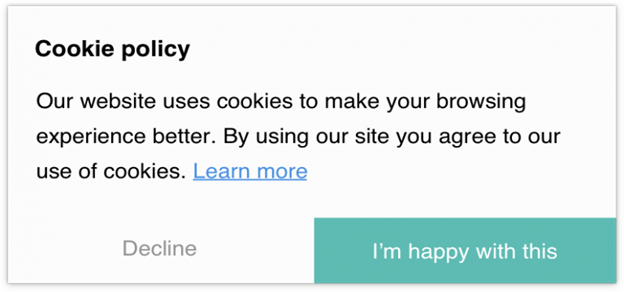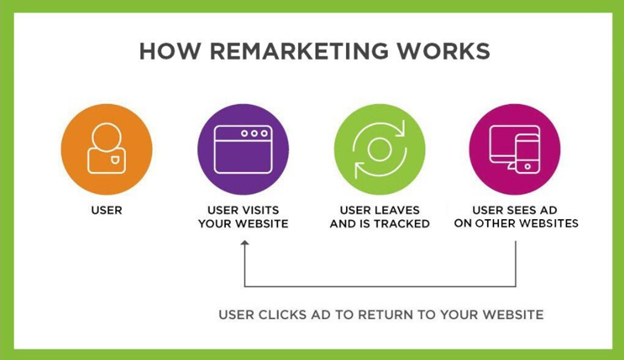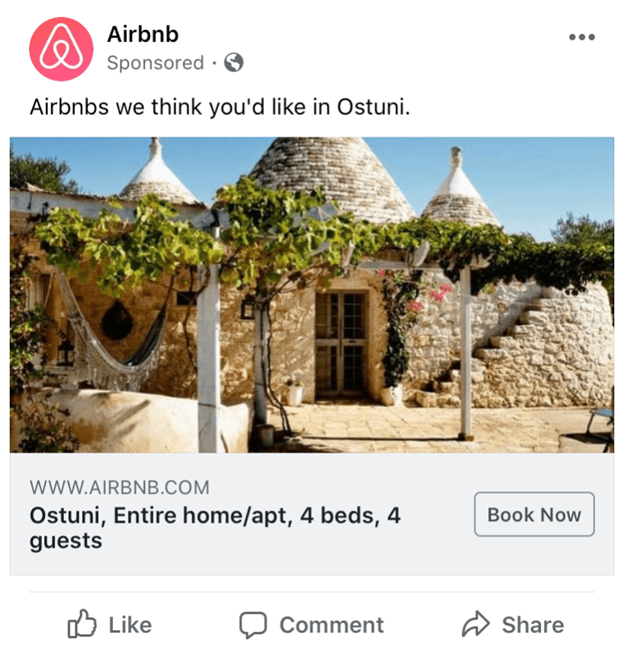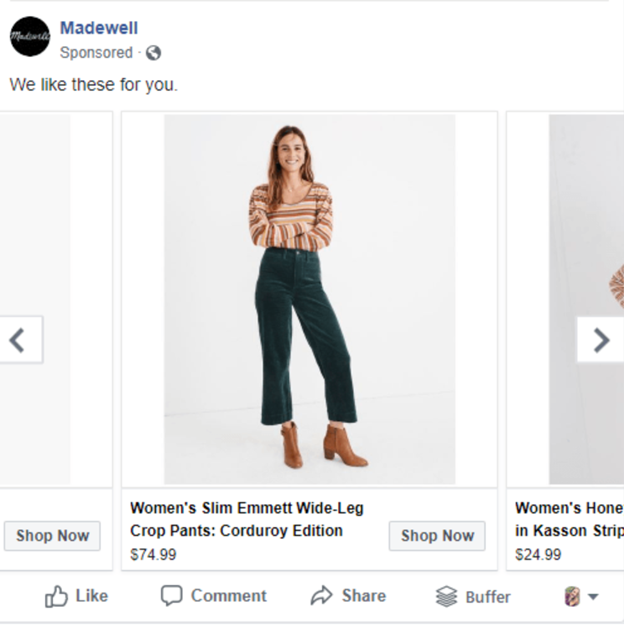Bullseye! Target your prospects and increase customer engagement with the help of this marketing strategy! [Every Thursday: FYO!]

You are scrolling through an online site to look for the perfect pair of boots.
A particular pair of boots captures your attention and when you click on it, you’re redirected to the product page.
As you scan the boots’ details, you find that it passes all your criteria for purchasing except for one thing: Price.
Since the price of the boots is above your budget, you decide to let go of it and search for cheaper pairs of boots.
However, as you jump from website to website, you notice that the first pair of boots you checked keeps appearing as an advertisement on the other websites you’re visiting.
Do you think it’s a coincidence?
Not really…
REMARKETING, also known as Behavioral Retargeting, is the strategy of placing brand-specific product ads across the web browsers of people who have already visited a particular brand’s website.
Business owners and marketers use this strategy with the intention of getting online users (who left a business website before making a purchase) to return and complete the process.
Through remarketing, online users are given a second, third, or as many chances to transact with a brand online.
How does remarketing work?
Perhaps as an online user, you’ve seen a few of these pop up boxes as you browse through different websites:
If you click on “OK,” “I’m happy with this,” or “Accept,” you are giving websites the permission to remarket their products or services to you.
Remarketing works by putting cookies (small files that store an online user’s information) on your browser to track your website visits or online activities without storing your personal information like name and address.
Once you have been “cookied” by a particular brand’s website, it will follow your browsing activity and remarket its product ads to you even when you’ve moved on to another website.
As a business owner or marketer, how will you and your brand benefit from the remarketing strategy?
- Improve brand recall.
Remarketing is a helpful strategy to remind prospects about your brand.
Ads of this type help online users recall the item and message they viewed on your brand’s website.
Even if your prospects don’t end up purchasing the product after seeing your ads, there’s a high chance that they will remember your brand.
If your brand is the first name that comes to mind the next time they look for products similar to yours, there’s a possibility that they will purchase from you.
Remarketing ads help you strengthen your brand image and positioning, making it notable to your target market.
It also increases your brand’s online presence by displaying your product ads across the web.
- Boost conversion rates.
According to search marketing company WordStream, online visitors who see remarketing ads are 70% more likely to be converted into customers of the brand that’s advertising.
Remarketing ads can drive online visitors involved in a conversion process back into a sales scenario.
People who already visited your brand’s website and checked your items are the easiest leads to convert since they’re already familiar with your brand.
On the other hand, attracting first time visitors to your site requires effort because only a small percentage of these visitors will buy your products and sign up for your samples, trials, or newsletters for the first time.
In this case, remarketing can serve as your brand’s second point of contact to remind them of the time they spent browsing through your website.
- Improve ad relevance.
Remarketing gives you the ability to display ads based on behavior segmentation, or the marketing segmentation that divides online users into groups depending on their common behavioral patterns.
Through behavior segmentation, a message or an ad that is more appropriate to an online visitor can be displayed instead of a generic or non-specific ad.
- Appeal to a consumer’s interest and attention.
Remarketing gives brands the opportunity to re-engage with online users even when they are no longer on a brand’s website.
Combined with SEO, social referrals, or other types of ads, remarketing serves as a secondary line of attraction to your brand.
- Redirect traffic to your brand’s website.
Remarketing helps to recapture some of the lost online traffic due to users who have abandoned the transaction process.
Once they click on your remarketing ad, they will be directed back to your website where they can decide to either continue the transaction process or browse through other websites similar to yours.
Here are a few tips to make your remarketing strategy effective:
- Don’t show generic ads. Show ads that are relevant and targeted to each specific user group.
- Use ads that are direct, with clear call-to-actions, and create a sense of urgency on your target market’s part.
- Make sure you embed the correct URL in all your remarketing ads. Your target market might get discouraged if they click on your ad but they are taken to a different website.
- Create different types of ads for your remarketing strategy. After that, test what ad platforms, formats, and sizes work best for your brand.
Footwear manufacturing company Nike uses remarketing to advertise its products online.
Once a user searches through Nike’s website and leaves without making a purchase, a cookie attached to the user’s browser will enable Nike to display remarketing ads on other sites the user will visit.
The ad will display various products that are suggested for the user based on his or her previous activity on Nike’s website.
Aside from that, the ad contains a call-to-action button that will redirect the user to Nike’s website, should he or she decide to purchase one of Nike’s products.
Another brand that utilizes remarketing ads is vacation rental company Airbnb.
Travelers who go to Airbnb’s website to search for accommodations but have abandoned the site in the middle of the process will see remarketing ads displayed across their social media accounts.
For example, in Facebook, the remarketing ads will display a photo of the same listing an online user viewed on Airbnb’s website, together with a call-to-action button that says “Book Now.”
Clothing company Madewell also takes advantage of Facebook remarketing ads to target online users who’ve visited its site.
The brand’s remarketing ads feature curated products that are tailored to online visitors’ browsing history and preferences.
By showing customized ads, Madewell is able to appeal to its target market’s needs and interests, motivating them to make a purchasing decision from the brand.
With the right approach, you and your brand can also get the most out of remarketing to increase your brand’s awareness and online visibility.
Just remember to give online users the option to opt out of your remarketing ads so they won’t see your brand as a threat to their online privacy.
Remarket your ads to re-engage with your customers and online visitors!
If the first time won’t do the charm, there’s always the second time, the third time, and so on.
Apply the remarketing strategy as part of your campaigns and let it help you strengthen your brand’s online presence.
About The Dynamic Marketing Communiqué’s
“Thursdays: FYO! Find You Optimization”
Why should you stop thinking SEO and start thinking FYO?
We’re not saying that you should abandon Search Engine Optimization (SEO).
Don’t get us wrong, of course, we know this is something very important, especially in today’s digital marketing age.
The internet landscape is vast, and a world of its own. You really need to distinguish yourself and make your brand/company/website known and easily searchable.
Better yet, get to the top of page one for Top Results on Google or any other search engine.
However, what is the purpose of SEO? It’s that customers Find You!
That’s what matters. So, while SEO is one factor of FYO… it really is only one, and we ought not to abandon all the myriad of ways digitally and offline for improving your FYO.
How can we look at this from a different and better perspective?
Let’s say you have it in the bag! You and your team are experts in SEO. Awesome. But did you ever wonder what else you could do to push it further and give your SEO skills a boost?
FYO! Find You Optimization!
You need your target audience to FIND YOU—your brand, product, service, or offer. This is SEO plus other tools that increase visibility online (and offline).
Every Thursday, we publish content on how you can get your target market to find you, beyond the typical “type and search.” There are other things you can do along with your SEO to give your online advertising process a boost.
Try considering other tactics beyond it—WOMO (Word Of Mouth Optimization), RO (Referral Optimization), and “All-Other-Means-Of-Getting-Your-Target-Market-To-Find-You” Optimization (AOMOGYTMTFY, if you’d like a long acronym).
Part of a great marketing strategy is knowing how to adapt new methods and make use of different types of marketing and promotion that best fit your business goals and which give you the results you want.
Hope you’ve found this week’s insights interesting and helpful.
Stay tuned for next Thursday’s FYO!
Cheers,
Kyle Yu
Head of Marketing
Valens Dynamic Marketing Capabilities
Powered by Valens Research
www.valens-research.com

